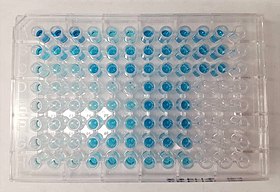Enzyme-linked immunosorbent assays (ELISAs) have been a mainstay in veterinary diagnostics for many years. They offer a reliable and versatile platform for detecting antibodies and antigens associated with infectious diseases. However, recent advancements are pushing the boundaries of ELISA applications, opening doors to exciting possibilities in various veterinary medicine fields. This blog post explores the emerging applications of ELISAs, venturing beyond traditional infectious disease diagnosis and into the realm of precision medicine.
Beyond Serology: Quantifying Biomarkers
Historically, ELISAs in veterinary medicine focused on qualitative detection of antibodies or antigens. Now, advancements are enabling them to quantitatively analyze biomarkers. This allows for:
- Monitoring disease progression: Measuring biomarker levels over time can provide valuable insights into disease activity and how well a treatment is working.
- Early disease detection: Sensitive ELISAs can detect subtle changes in biomarker levels, potentially facilitating earlier diagnosis before clinical signs appear.
- Risk stratification: Quantifying biomarkers associated with specific diseases can help identify animals at higher risk, allowing for preventive measures.
Precision Medicine: Tailoring Treatment
The concept of precision medicine, targeting therapies based on individual animals' specific needs, is gaining momentum in veterinary medicine. ELISAs can contribute by:
- Identifying genetic susceptibility: ELISAs targeting MHC markers can help identify animals predisposed to certain immune-mediated diseases, allowing for personalized treatment plans.
- Monitoring therapeutic response: Quantifying biomarkers associated with specific treatment targets can be used to monitor response to targeted therapies and adjust treatment regimens if needed.
Emerging ELISA Formats
The development of novel ELISA formats further expands their applicability:
- Multiplex ELISAs: These allow simultaneous detection of multiple biomarkers in a single sample, providing a more comprehensive picture of an animal's health status. Companies like Gentaur offer a variety of multiplex ELISA kits designed for veterinary applications.
- Point-of-care (POC) ELISAs: These portable and user-friendly formats enable rapid diagnosis in resource-limited settings or at the point of animal care. Gentaur, among other biotechnology product suppliers, provides POC ELISA kits suitable for veterinary use.
Conclusion
ELISAs are evolving beyond their traditional role in veterinary infectious disease diagnosis. By capitalizing on their versatility and adaptability, ELISAs are poised to play a key role in precision medicine, biomarker quantification, and the development of novel diagnostic tools. Continued research exploring new formats, standardization efforts, and integration with advanced technologies like microfluidics hold immense promise for the future of ELISAs in veterinary medicine.
For those interested in learning more about the technical aspects of ELISAs, a helpful video resource is available:
